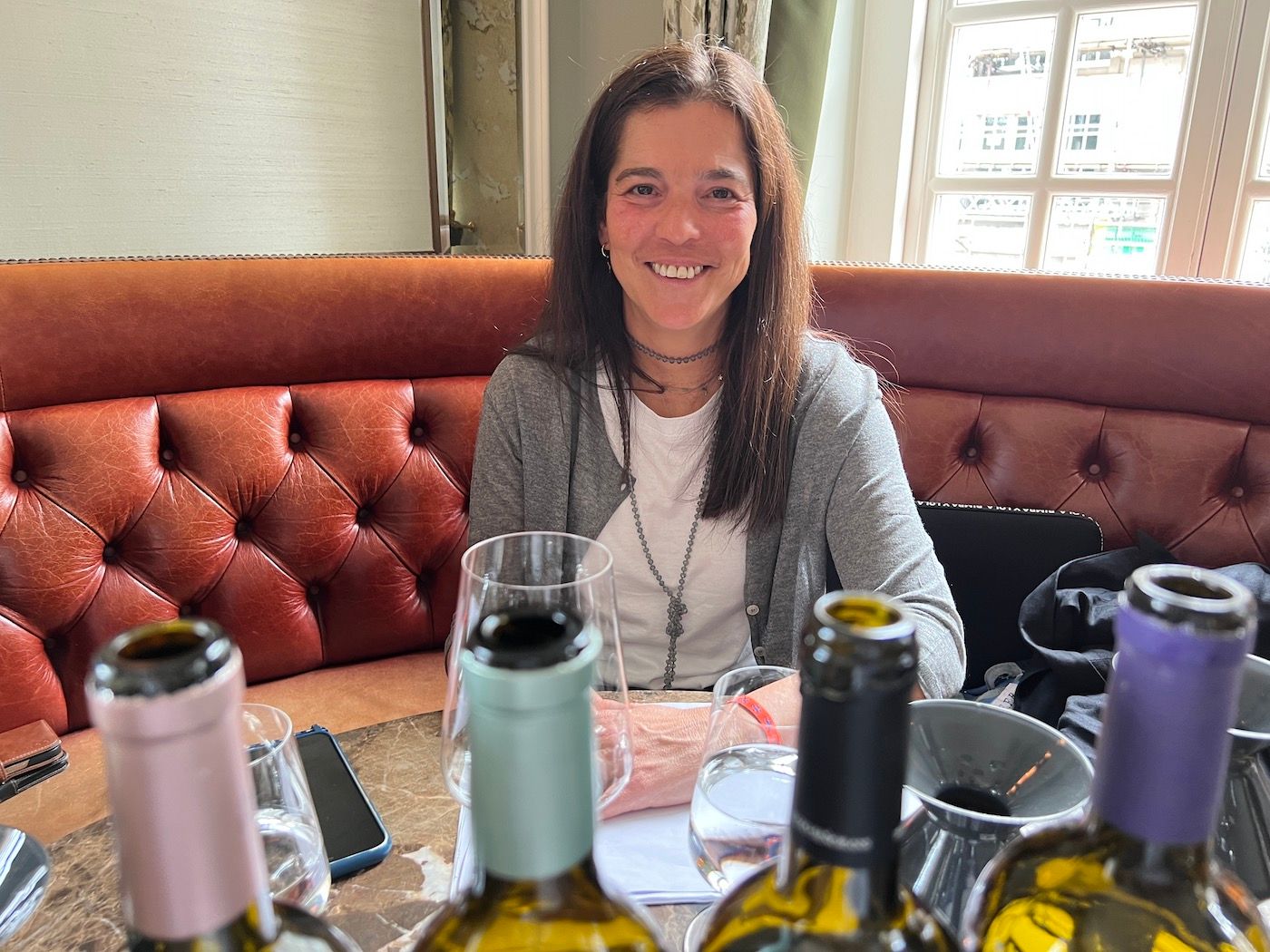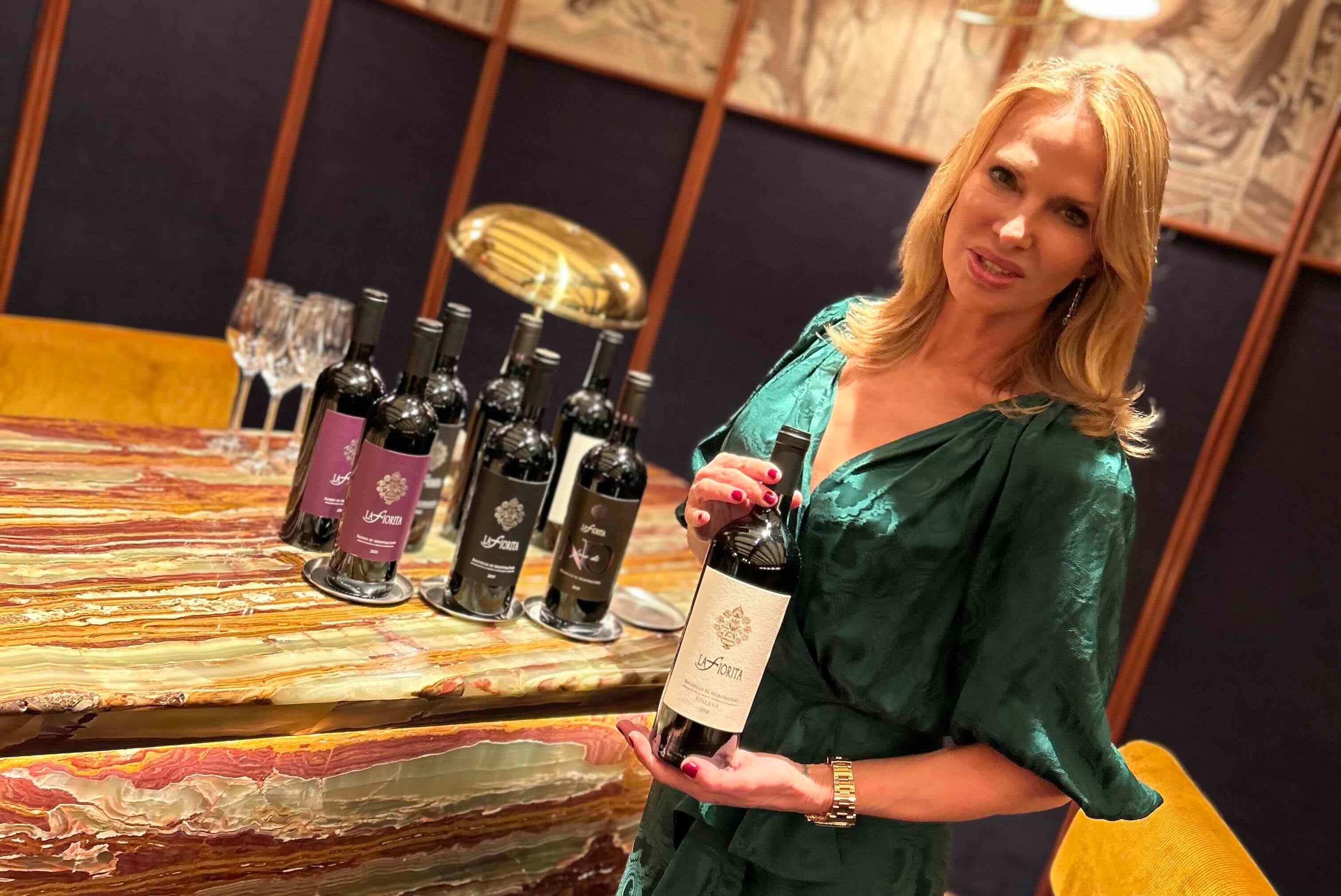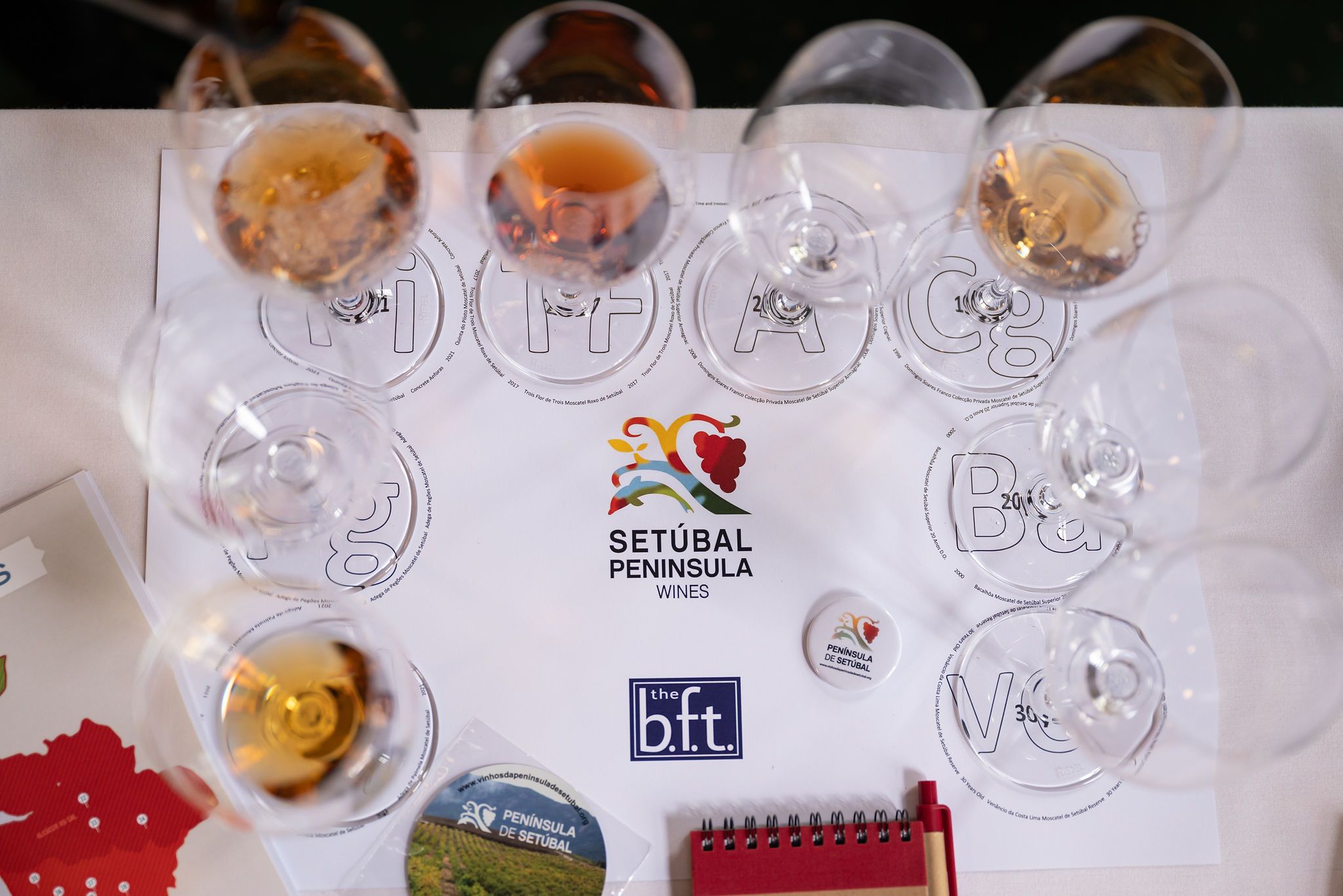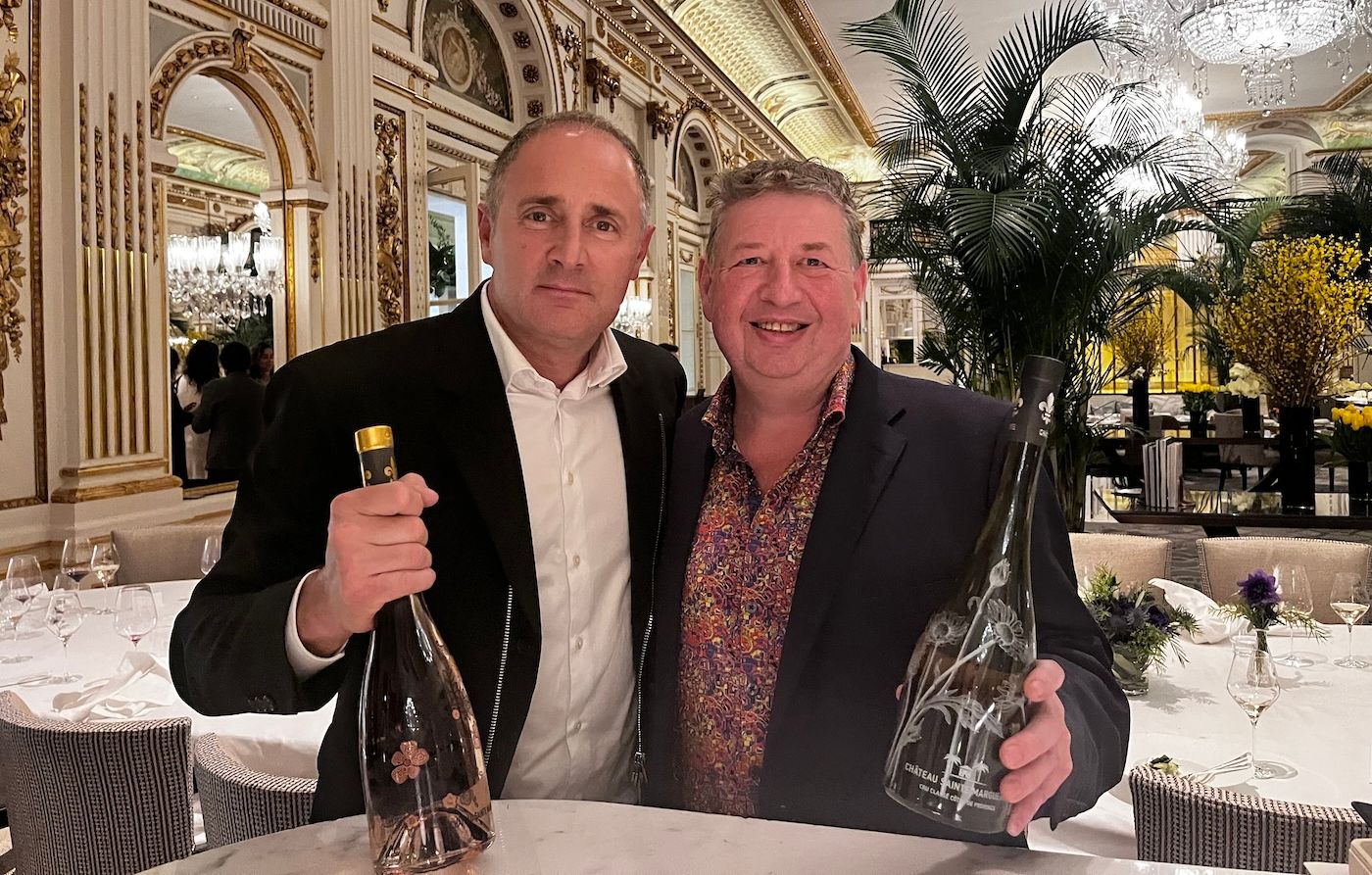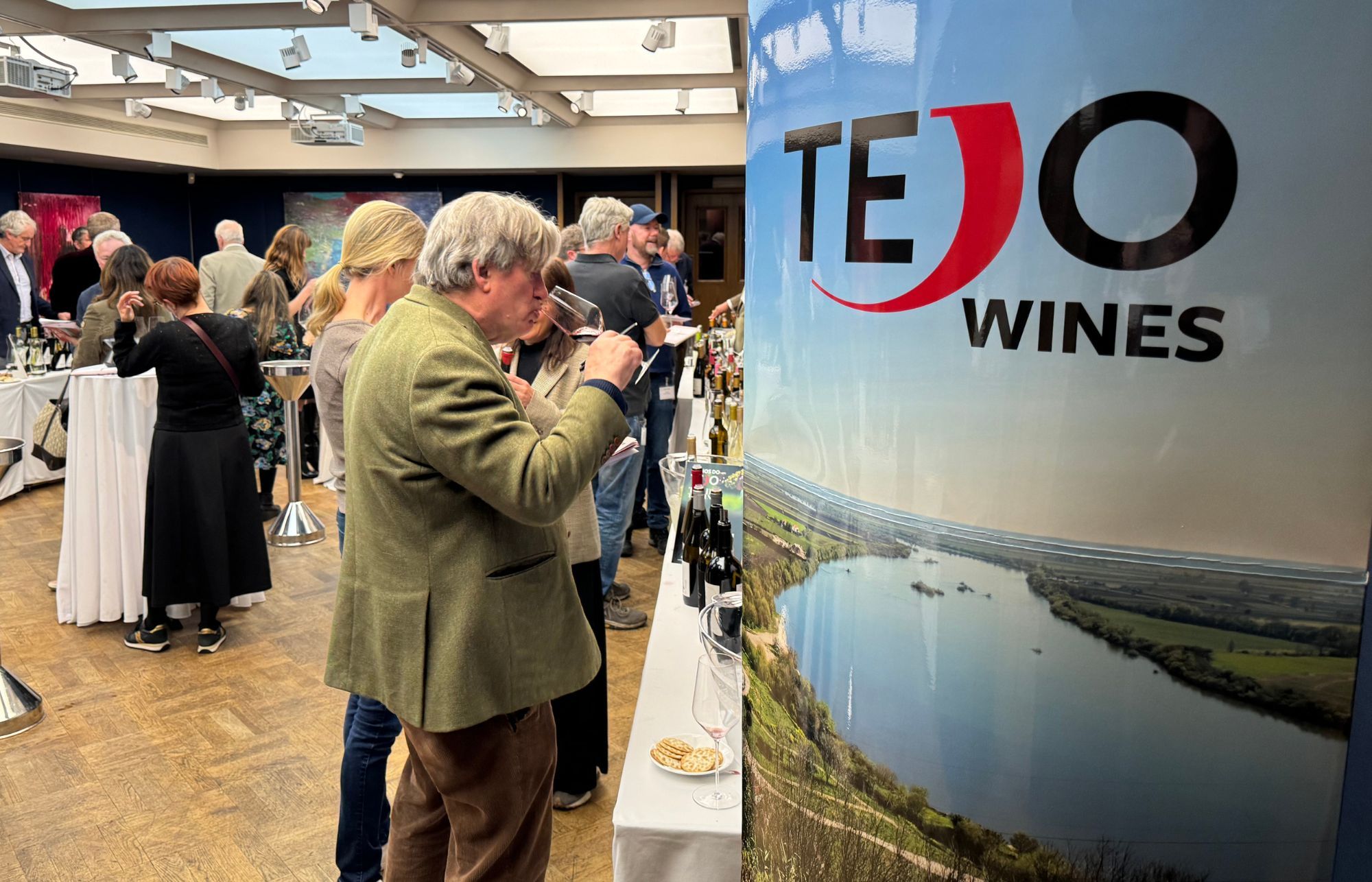“Yes, we did get resistance – people say ‘I don’t understand the point, what’s it going to give you? The Albariño should be young fresh and fruity’,” says Vicky Mareque Bueno about Pazo Señorans’ aged styles.
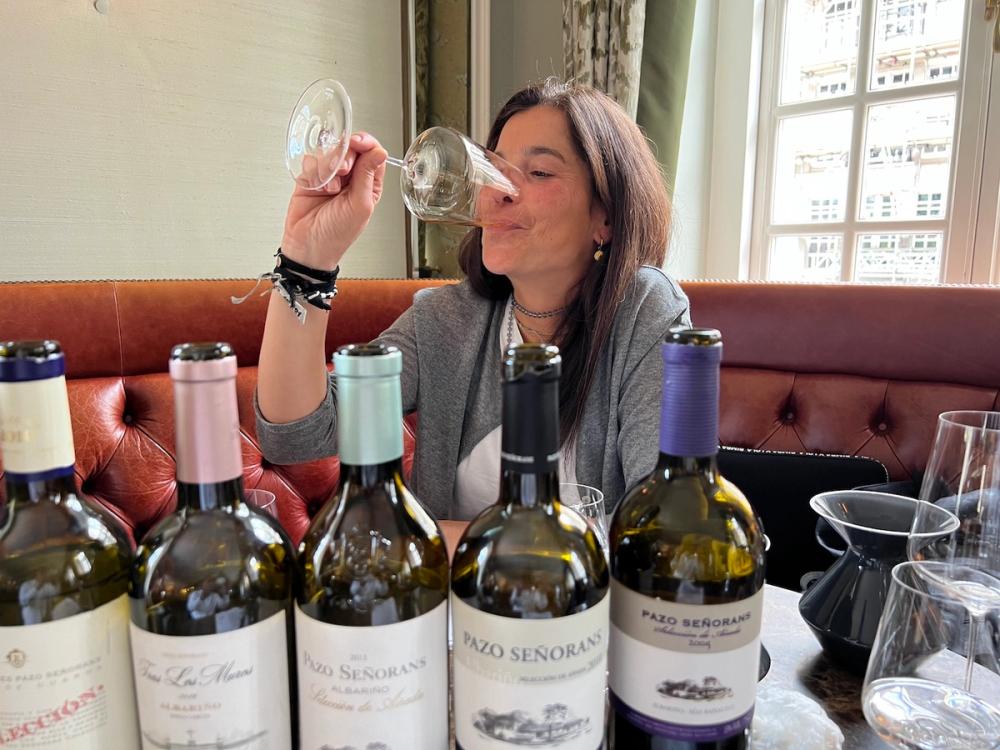
Vicky Mareque Bueno, 67 Pall Mall, May 2023
In this era of diversification, where it’s not unusual for a winery to offer a bewildering array of cuvées with a plethora of grape varieties and styles, it is refreshing to meet a winemaker who is not a ‘Jack of all trades’ but a specialist and a true master of one craft. Pazo Señorans, arguably the finest producer of Albariño in the world, only works with the one grape and only produces quality Albariño, made roughly the same way then released one year, three years and 10 years after harvest.
Admittedly the estate now produces a new, wood-aged cuvée, an occasional late harvest wine and a couple of spirits but, by and large, Pazo Señorans has made its name over the past 34 years by using the best Albariño fruit possible, with little intrusive intervention in its winemaking, and then using time on the fat and fine lees, and in the bottle.
It’s almost as if their only raison d’etre is to prove to the world that Albariño ages very well and takes on a range of characteristics that few other producers in their home region of Rías Baixas can achieve.
Albariño, with its naturally high acidity and phenolic structure (from its very thick skins) is a natural for long ageing but, like other fresh, dry, coastal white wines – think Picpoul, Muscadet, Vermentino – are usually drunk pretty soon after bottling.
It’s easy to understand why: the zippy acidity, citrus character and salinity of young Albariño work so well paired with fresh seafood; couple this with the cashflow needs of the largely smallholder growers and you can see why there hasn’t been a tradition of ageing Albariño in Rías Baixas until Pazo Señorans came along. Through their methods of extended lees and bottle ageing Pazo Señorans has proved that Albariño can be more than just a seafood-quaffer and, in the process, has helped elevate the grape into the realms of fine wine.
Vicky Mareque Bueno: true pioneer

Displaying the pergola vine system: Vicky Mareque Bueno at Pazo Señorans, 2016
Vicky Mareque Bueno is the second generation of the family to take the reins at Pazo Señorans, a winery that’s situated on Spain’s northwest coast and has, since 1979 when her parents took it on, always been a matriarchy. Vicky’s mother Marisol Bueno and her doctor husband Javier Mareque bought the estate with Marisol starting as a viticulturist, then wine producer in 1988 alongside Ana Quintela who has been the winemaker since the beginning.
A true pioneer and force of this young appellation, it is through Marisol’s work that Rías Baixas got DO status in 1988 in the first place – quality thresholds were introduced and the region began to receive worldwide recognition. Today,the property is one of the few remaining family-owned estates in the region and remains quite small in order to maintain a rigorous level of quality. In a bumper year it will do well to achieve 300,000 bottles.
After being a buyer for a major retailer, Vicky Mareque took over the reins of her parents’ estate in 2006 and has helped grow it to its current 21-hectare size of owned vineyards with another 27 hectares of vines – split into 500 micro-parcels – managed by 160 small growers.
A warm, likeable person with the voice of a late-night DJ, Vicky Mareque explains the philosophy of Pazo Señorans to me in the upstairs bar of London wine club 67 Pall Mall in early May.
“We want to give in the mouth what promises on the nose – low intervention – respecting the typicity, respecting the soil, to give what the variety gives to us and respect the difference in vintages. We are focused on giving structures, with fat lees, fine lees, time in steel and the bottle – Albariño gives quite rich mouth.”
Mareque says that, as the family’s knowledge grew about the variety, picking by hand, vinifying by plot, and using steel with no malo – it was possible to respect typicity, soil and vintage with lees work and time alone. And proving that Albariño is a wine that can age very well indeed.
But wasn’t there opposition at first with ageing a wine that normally gets drunk soon after bottling?
“Yes, we did get resistance – people say ‘I don’t understand the point, what’s it going to give you? The Albariño should be young fresh and fruity’ But they had a beautiful selection from us in the first year, they really like it, so they put it in the market and at the end – claro – it’s a very serious wine, people really, really like it and now we have really loyal clients.”
Dealing with current issues
Unlike a lot of Spain where reservoirs are at an all-time low, Rías Baixas has plenty of water, but the heavy precipitation and humidity are the reasons why Mareque believes being fully organic and biodynamic is impossible – and why the pergola is still the preferred system in the vineyard.
Rising costs are an issue, however, in three years grapes per kilo have risen from €1.20 to €3 – one of the results of a number of big players moving into the region to make an Albariño. “It has made a difference for sure,” she continues, “but like in any other region some that are coming in are good, some coming in are not so good.”
But loyalties and family ties are thicker than water in this part of the world, with Mareque only having lost one of its growers over the past three years, even with newcomers willing to pay a lot more money for fruit.
Conversely, although Pazo Señorans has grown over the years it has done so stealthily. Smallholdings really are small and acquisitions are complex, Vicky relays one example where to acquire 2.5 hectares of vines she had to deal with nine different vendors.
So what about the Pazo Señorans wines themselves?
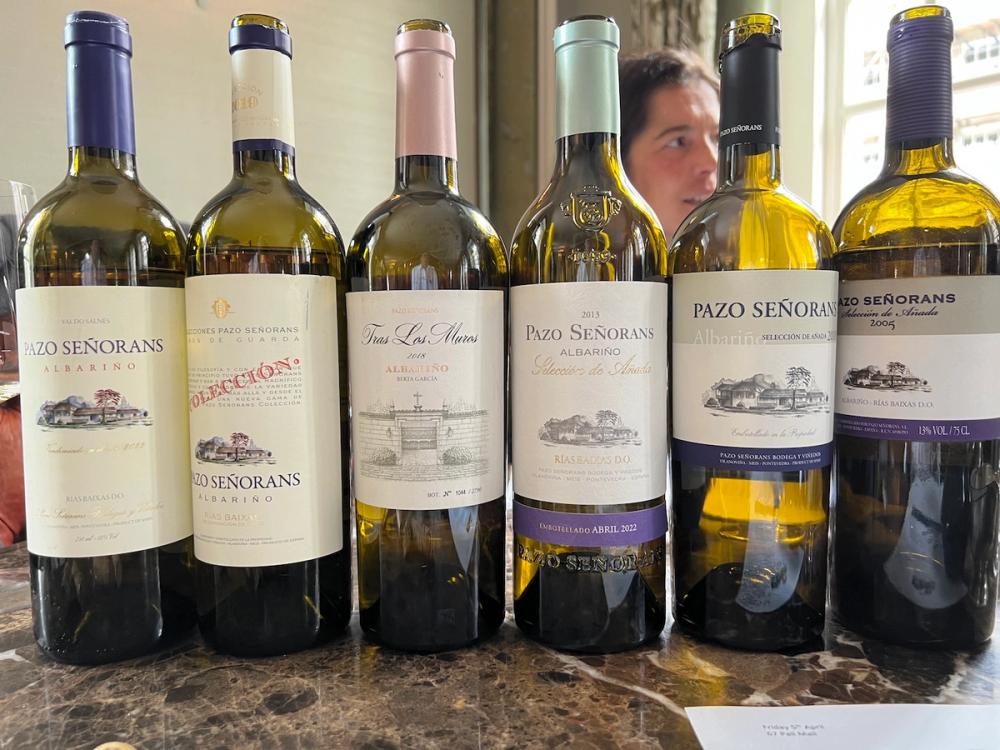
We tasted through six wines – the four new releases onto the market, then a 2010 and a 2005 Albariño to drill home the point about ageing.
Albariño, Pazo Señorans 2022, 13.5% abv
The mainstay of the estate’s production with 250,000 bottles produced out of a total of 280,000 bottles in an average year. The fruit comes from their own vineyards and 500 micro-parcels tended by over 160 growers in a 10km radius. The fruit is fermented in steel at a temperature of 16°C then kept on the lees for a minimum of five months before bottling. In practice this ageing on the lees varies from vintage to vintage – sometimes it’s three months sometimes six.
Where the 2021 vintage was bountiful, producing lighter alcohol wines, 2022 was hotter with a rainy autumn, producing a wine with more breadth and fruit on the palate. The aromatics are full and vinous, with pretty, floral aromas suffused with satsuma and nectarine. Beautifully fresh and dry on the palate, quite full and fruity, complex, then mineral-charged and bitter (in a good way) on the finish. Great acidity (6.4 g/l) forming the backbone.
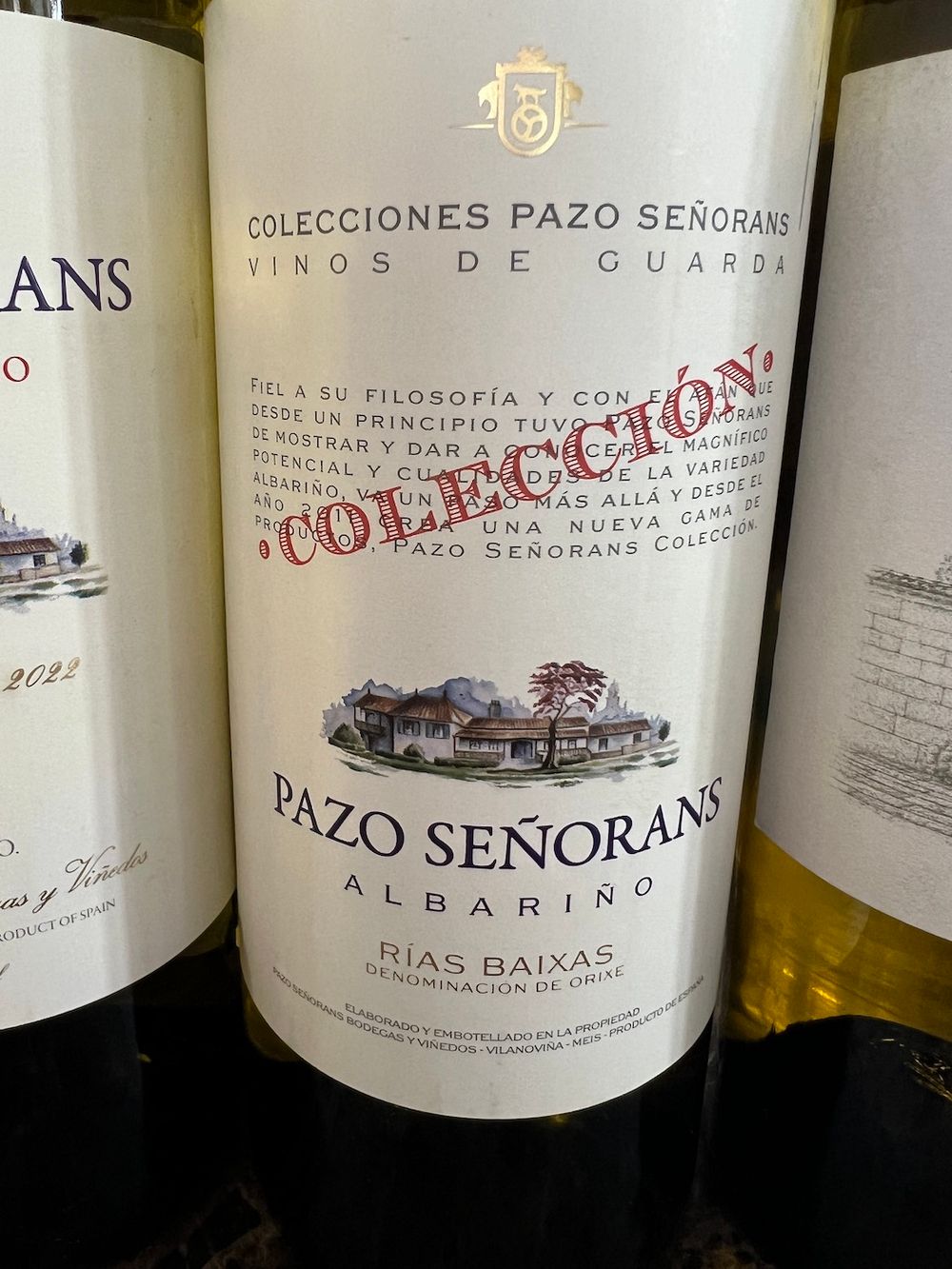
Albariño Colección, Pazo Señorans, 2019, 13.5% abv
The first example in this tasting of how well Albariño can age – this Colección wine is exactly the same wine as the previous one in terms of source and vinification except it is left in its bottle and cellared for 30 months.
2019 was a more typical year in the Salnes valley compared to 2022. The wine is deeper straw yellow than the 2022; it has a pretty, complex nose charged with minerals, herbs, citrus and nectarine that leads into a more full-bodied mouthfeel, with persistent fruit flavours and a lot more intensity; you pick up a hint of tropical fruit (pineapple), it is juicy, with that lovely acidity ever-present. Fresh and delicious and deceptively dry – there’s only 2g/l residual sugar here – but it feels more rounded than that. The first vintage of Colección was 2011.
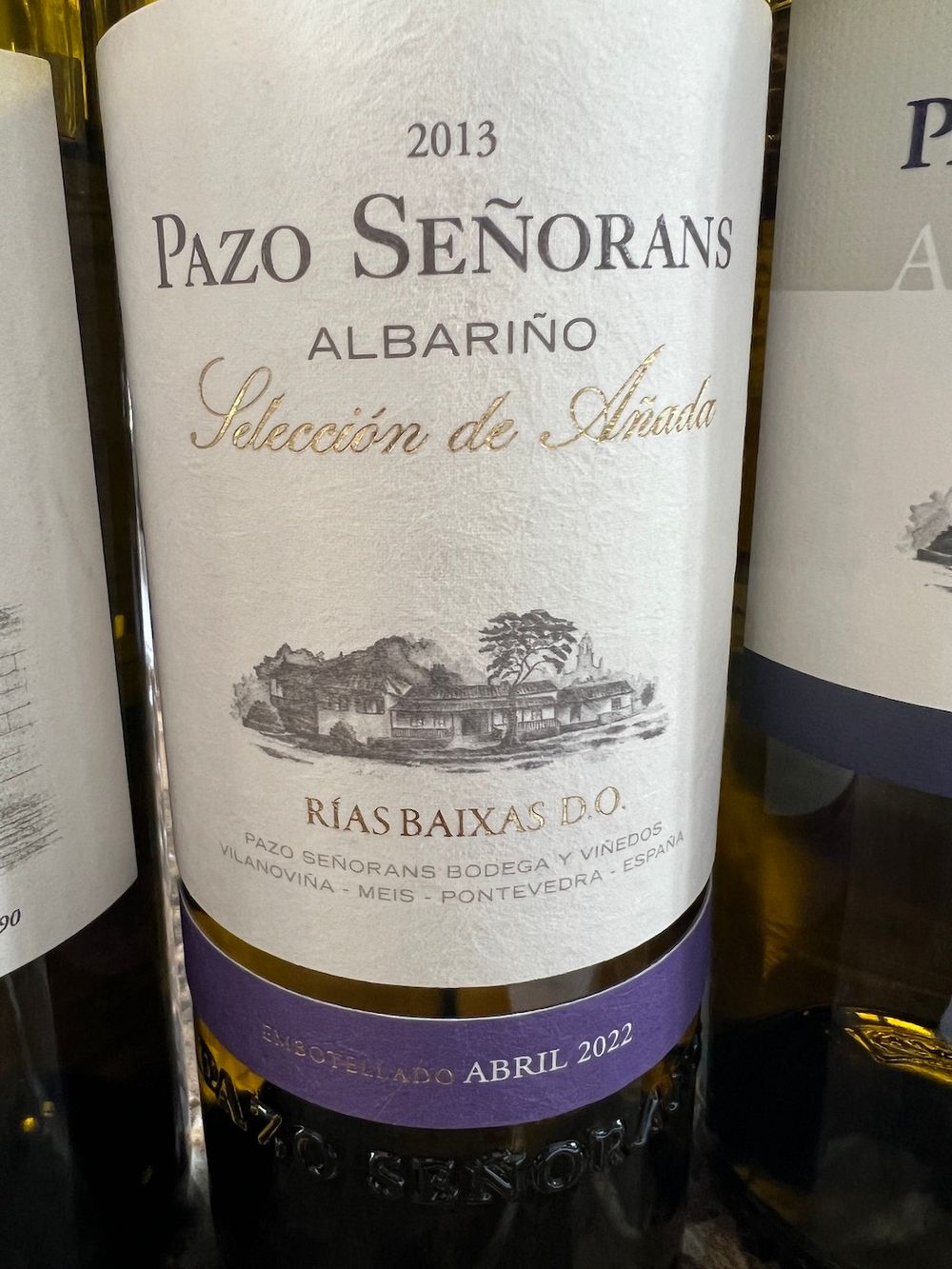
Albariño Selección de Añada, Pazo Señorans 2013, 13% abv
Unquestionably one of the top fine white wines of Spain, Selección de Añada is a single vineyard wine that spends a minimum of three years on fine lees, then is aged in tank until it’s ready for release 10 years after the harvest. The fruit is sourced from 45-year-old vines in the poor soil of the four-hectare Los Bancales vineyard which, since 1995, has been vinified separately. The de-stemmed fruit is cold-soaked then slow-pressed, followed by 20 days fermentation in steel vat at 16°C with the estate’s own-prepared yeast. It then spends 36-42 months on fine lees, followed by a further 6-7 years.
Medium gold with green highlights, on the palate the wine is rich and ripe with a fresh purity; the mouthfeel is stunning with complexity, layers of texture and an intensity that is carried well by the still-keen acidity. You detect a range of flavours in the glass as the wine opens up – and a brine-like quality before a fabulously salty finish.
Despite the length of time ageing, this wine does need a little longer in the bottle (a few months say) for its true magnificence to shine and for some of the tension to dissipate. Fact-finders – the 2013 release is the second vintage to be released with the newly-designed label; there are 16,000 bottles produced.
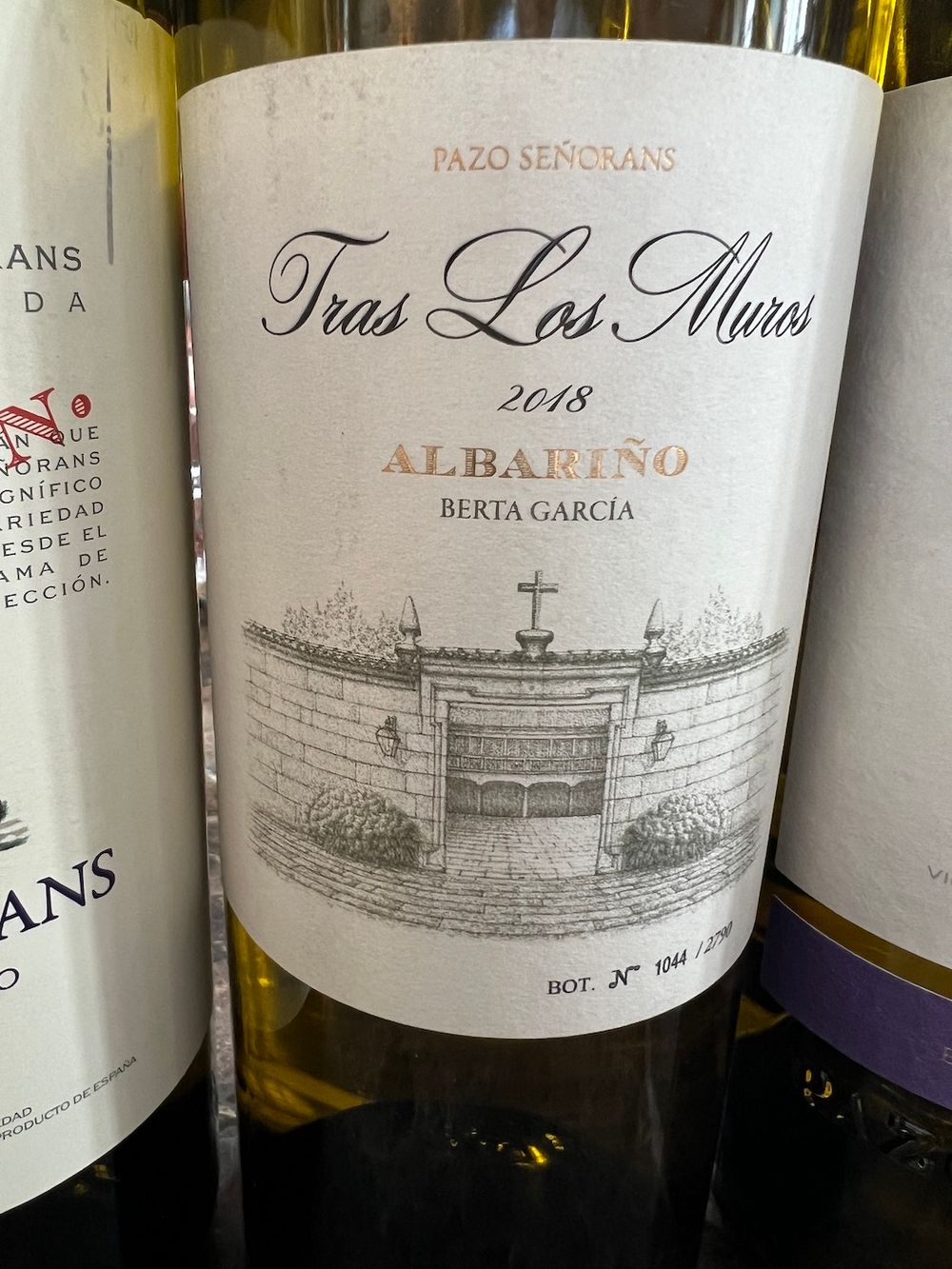
Albariño Tras Los Muros, Pazo Señorans 2018, 13% abv
From the vineyard ‘behind the walls’ of the estate this is an oak-aged Albariño in just its second vintage. The wine is aged on its lees in oak barrel for six months and then aged in vat for a further six months before spending 15 months in the bottle. Made by Berta Garcia the oak used is 2nd and 3rd use barrels sourced from Château Haut-Brion where Garcia used to work. This is a drier wine than the previous three with a higher acidity (a massive 7.9 gr/l).
Rich, intense and concentrated, this is a different take on Albariño which will divide the room, and is presumably why this has just 3,000 bottles made to (presumably) ‘test the water’. The oak shows through more on the nose than the palate; the aromatics include sweet spice, creamy oak and tropical fruit notes; on the palate the wine is quite a contrast with a sharp, almost austere mouthfeel, shot through with Atlantic sea spray, herbs and lemon pith. The finish is elegant with an attractive lemony-charged finish. More time needed in the bottle, I think, but a wine that sommeliers would be advised to have a taste of.
And finally…
Not part of Pazo Señorans’ new releases but tasted to show the enduring nature of its Albariño over time, we tried the Albariño Selección de Añada Pazo Señorans 2010 which was deep gold, mature, rich and toasty, with fine, pixilated flavours – a wine that is relaxed and totally at ease with itself. Older still we then tried the Albariño Selección de Añada Pazo Señorans 2005 which was rich and golden in the glass and unctuous, slightly oleaginous in the mouth, with that still-present acidity keeping the ripe, fruit syrup notes in check, and fresh. This had an almost late harvest quality to the wine. Would love to serve this in a blind tasting.
The wines of Pazo Señorans are imported and sold in the UK through Alliance Wine which is a commercial partner of The Buyer. To discover more about them click here.
